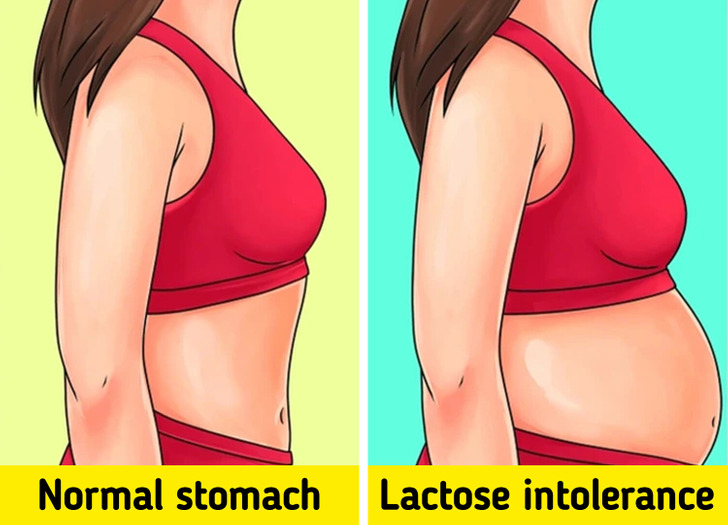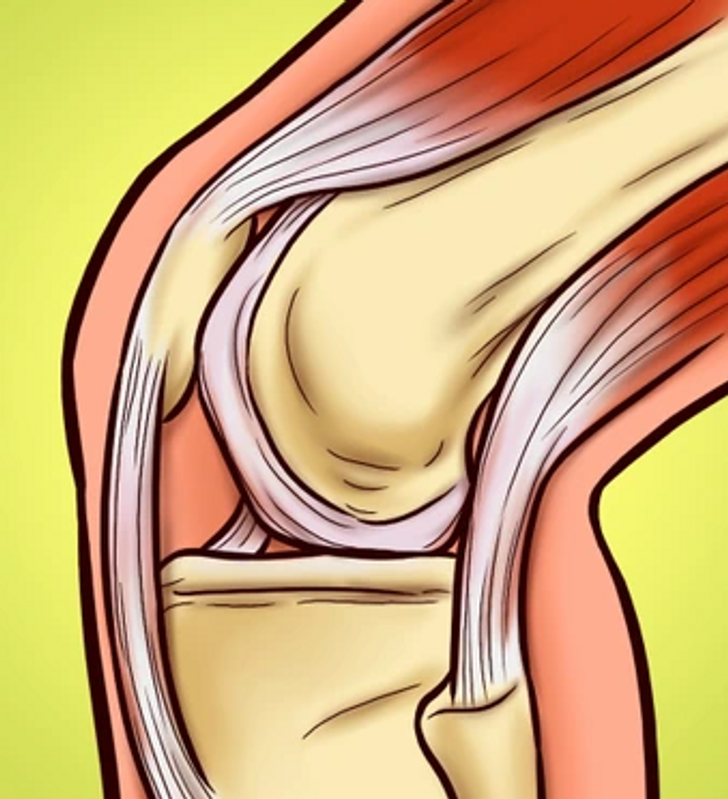10+ Coworkers Who Turned the Office Into a Reality Show


Lactose intolerance is more common than you might think, affecting millions globally, often without a clear diagnosis. The symptoms can be subtle, and many people live with daily discomfort without ever connecting the dots. In this article, we’ll break down 9 telltale signs your body might be using to signal that lactose could be the hidden cause behind your bloating, fatigue, or digestive woes.
CONTENT IS PROVIDED FOR INFORMATIONAL PURPOSES ONLY AND IS NOT INTENDED AS A SUBSTITUTE OF MEDICAL ADVICE.
SEEK GUIDANCE OF YOUR DOCTOR REGARDING YOUR HEALTH AND MEDICAL CONDITIONS.

While not as widely recognized, some people with lactose intolerance report a range of less typical symptoms, such as headaches, fatigue, brain fog, muscle and joint pain, urinary issues, and even eczema. One particularly surprising link? Mouth ulcers, or canker sores. Research suggests that dairy products like milk, cheese, and yogurt may contribute to the development of these painful sores. Some experts believe proteins in cow’s milk can trigger an adverse immune response in certain individuals, leading to flare-ups.
If you’re prone to frequent mouth sores, it may be worth trying an elimination diet. Cutting out dairy—especially products made from animal milk—could help reduce their occurrence. Instead, opt for alternatives like soy milk, oat milk, or vegan cheese to see if your symptoms improve.

Red eyes can be a symptom of an allergy to cow’s milk protein. Lactose intolerance is a digestive issue caused by the inability to digest lactose, the sugar in milk, while cow’s milk allergy is an immune response to milk proteins. Red eyes, along with other symptoms like hives, swelling, and digestive issues, can be signs of a cow’s milk allergy.

Dairy allergies can affect far more than just the digestive system. These immune reactions can impact the skin, respiratory system, and more. Common symptoms include:
In infants, one possible sign of a dairy allergy is blood in the stool, which should always be evaluated by a healthcare provider.
In more severe cases, dairy allergies can lead to anaphylaxis, a serious and potentially life-threatening reaction. Symptoms of anaphylaxis may include rapid throat swelling, difficulty breathing, a drop in blood pressure, and dizziness. This condition typically begins within minutes of consuming the allergen but can sometimes be delayed by hours.
Immediate treatment is critical. Administer epinephrine (if available) and seek emergency medical attention right away. If epinephrine isn’t on hand, go directly to the nearest emergency room—do not wait.

Lactose intolerance occurs when the body lacks sufficient lactase, the enzyme needed to break down lactose, the natural sugar in milk. This condition, also known as lactose malabsorption, often leads to digestive discomfort after consuming dairy. Common symptoms include bloating, gas, and diarrhea. While not dangerous, it can significantly impact the quality of life.
Interestingly, not everyone with lactose intolerance experiences diarrhea. For some, especially those whose gut bacteria produce methane instead of hydrogen, constipation is a more prominent symptom. Research suggests that methane can slow down the movement of food through the intestines, leading to constipation in roughly one-third of lactose-intolerant individuals. This variation highlights the diverse ways lactose intolerance can present itself—and why it’s sometimes overlooked or misdiagnosed.

Bloating is one of the most common symptoms of lactose intolerance, affecting both children and adults. It stems from the body’s inability to properly digest lactose—the natural sugar found in milk and other dairy products. This happens due to a deficiency in lactase, the enzyme responsible for breaking lactose down into simpler sugars that can be easily absorbed into the bloodstream.
When lactose isn’t fully digested, it moves into the colon intact. There, it becomes food for gut bacteria, which ferment the sugar and produce gases like hydrogen, carbon dioxide, and methane. This fermentation process leads to bloating, abdominal discomfort, and often excessive gas—especially after consuming dairy-rich meals.

Lactose intolerance doesn’t always limit itself to the digestive system. In some cases, it can present with a range of non-digestive symptoms that may seem unrelated at first glance. These can include back pain, headaches, fatigue, brain fog, and difficulty concentrating. Some individuals also report sleep disturbances, dizziness, and a general sense of malaise.
Though less common, these symptoms may arise from the body’s struggle to process lactose, which can lead to inflammatory or metabolic responses in particularly sensitive individuals. While the exact mechanisms are still being researched, growing evidence suggests that lactose intolerance can affect overall well-being far beyond the gut.

When lactose isn’t properly digested in the small intestine due to a lactase deficiency, it travels into the colon intact. There, gut bacteria take over, breaking down the undigested lactose through a process called fermentation.
This fermentation produces gases—primarily hydrogen, methane, and carbon dioxide—along with certain acids. These byproducts are what lead to the hallmark symptoms of lactose intolerance, including bloating, abdominal discomfort, and flatulence. For many, excessive gas after consuming dairy is one of the first noticeable signs that their body may be struggling to process lactose efficiently.

Muscle and joint pain may not be the first symptoms that come to mind when thinking about lactose intolerance, but they can be connected. Lactose—the natural sugar in dairy products—is typically broken down by lactase, an enzyme produced in the small intestine. However, for much of the global population, lactase production declines after infancy, reducing the ability to properly digest lactose in adulthood.
Why does this matter? Even in individuals who can still digest lactose, the sugar is rapidly converted into glucose, which can influence gut health, disrupt the microbiome, elevate blood sugar levels, and potentially contribute to systemic inflammation. Whether due to poor digestion or the metabolic effects of lactose itself, the end result may be increased inflammation and discomfort, including muscle and joint pain, symptoms often overlooked in connection with diet.

One of the most common symptoms of lactose intolerance is abdominal pain or cramping, which typically develops within a few hours of consuming dairy products. This discomfort is caused by undigested lactose fermenting in the colon, leading to gas buildup and intestinal distress.
If you’re experiencing symptoms of lactose intolerance, it’s also worth checking for gluten intolerance, as the two can share similar signs like bloating and fatigue.
12 Ways Your Body May Be Telling You That You Have Gluten Sensitivity











